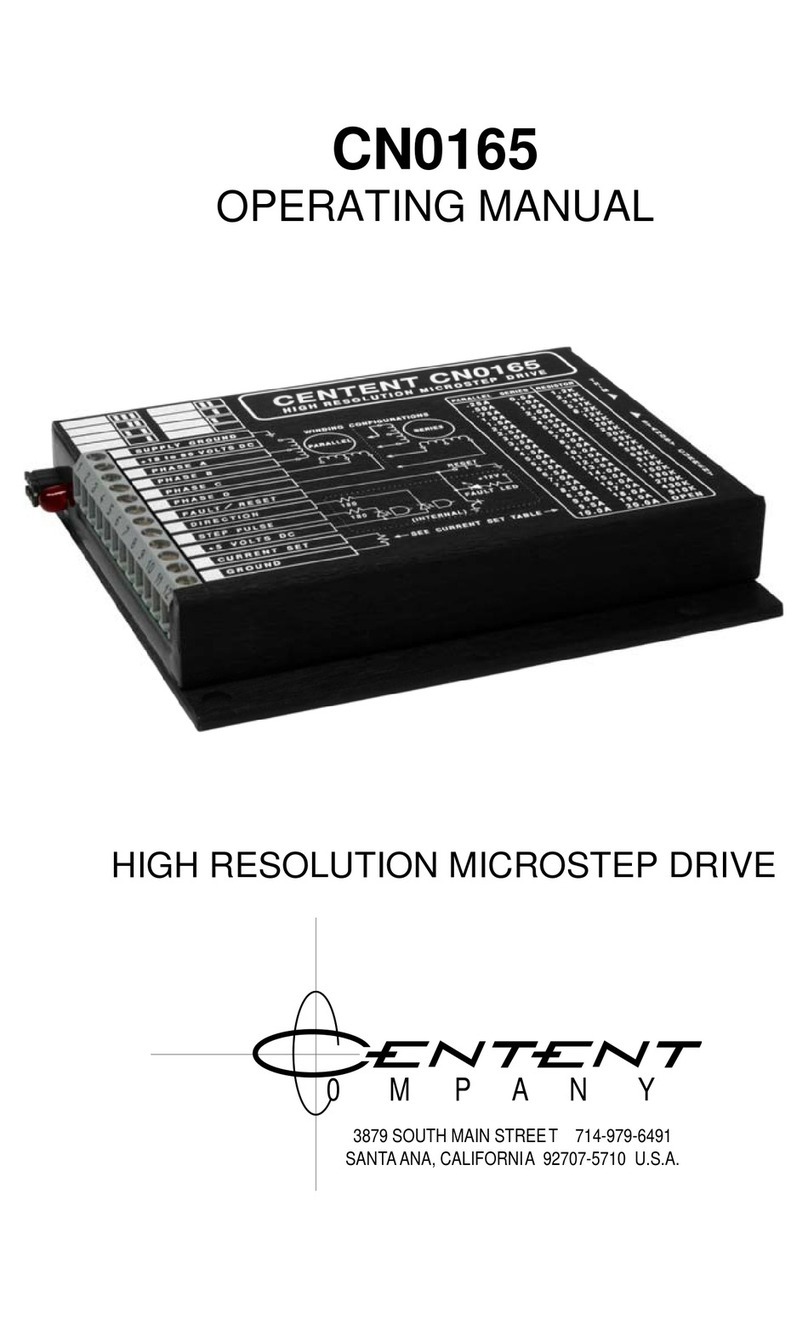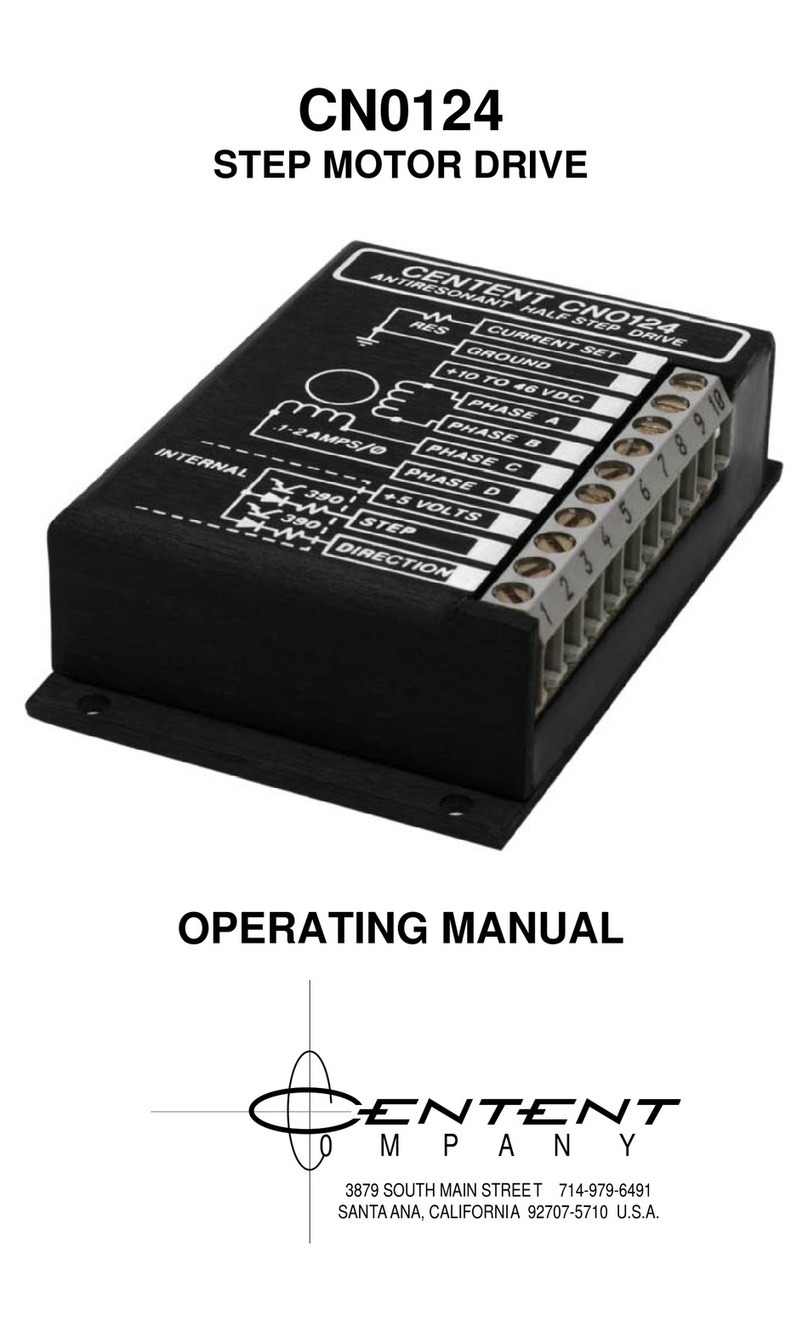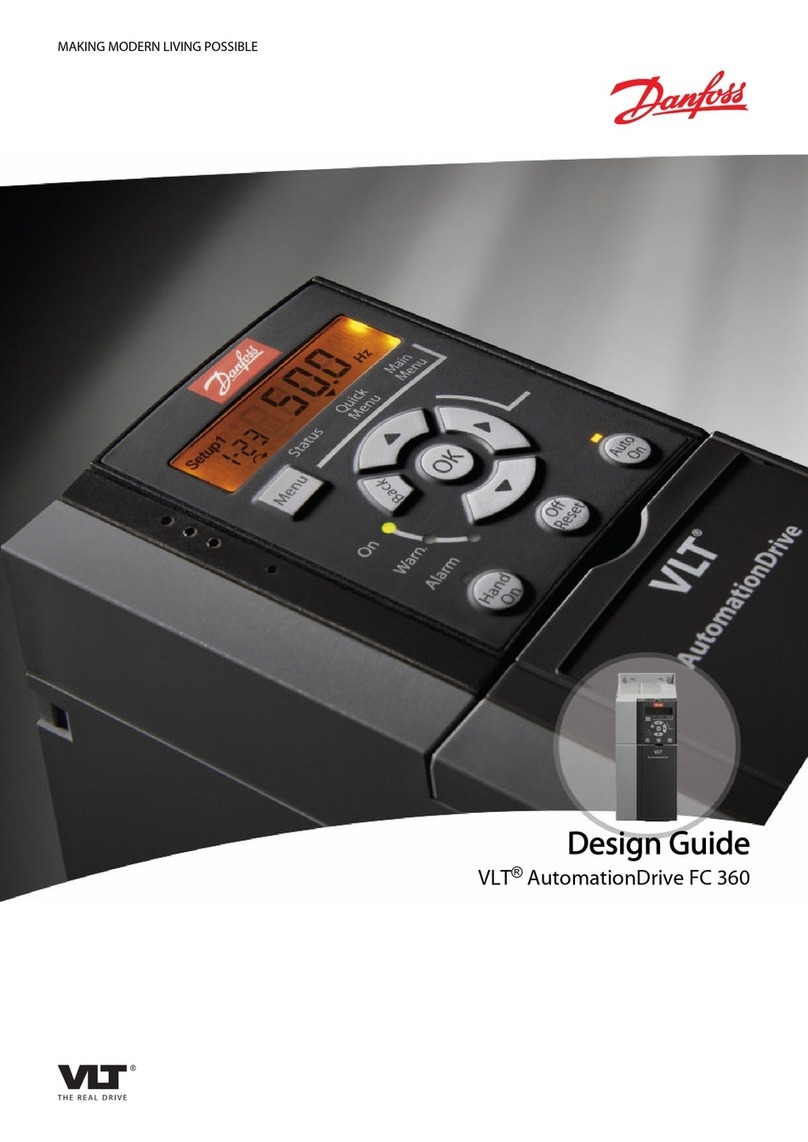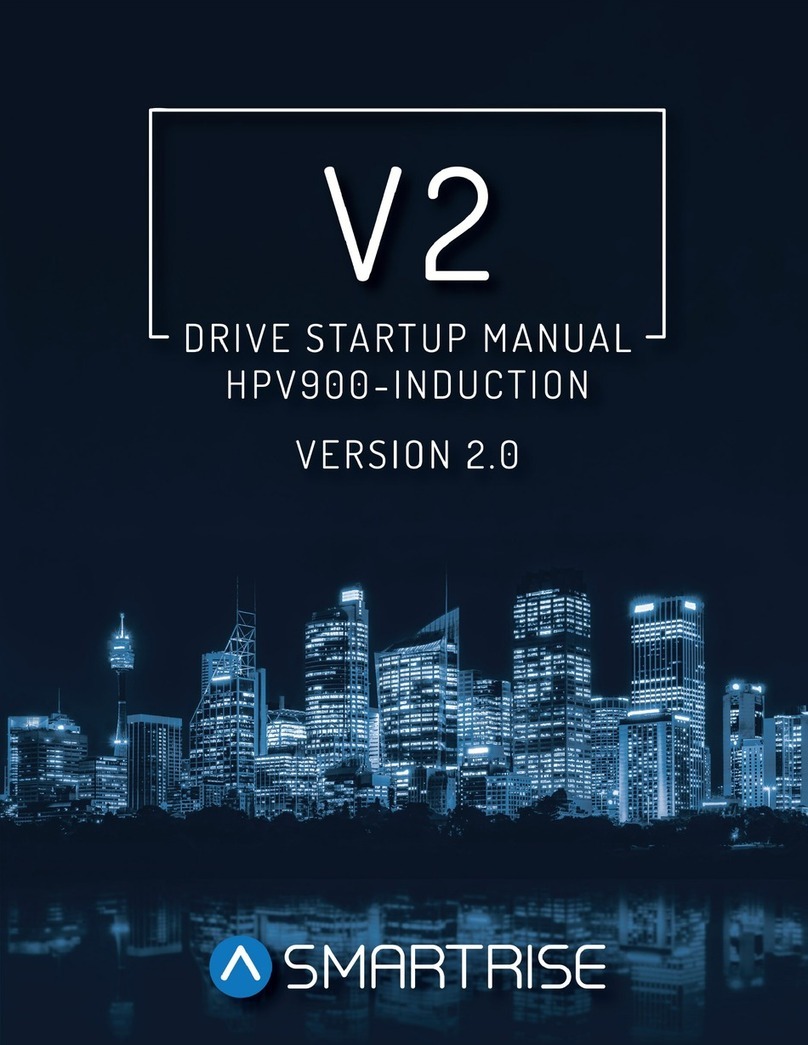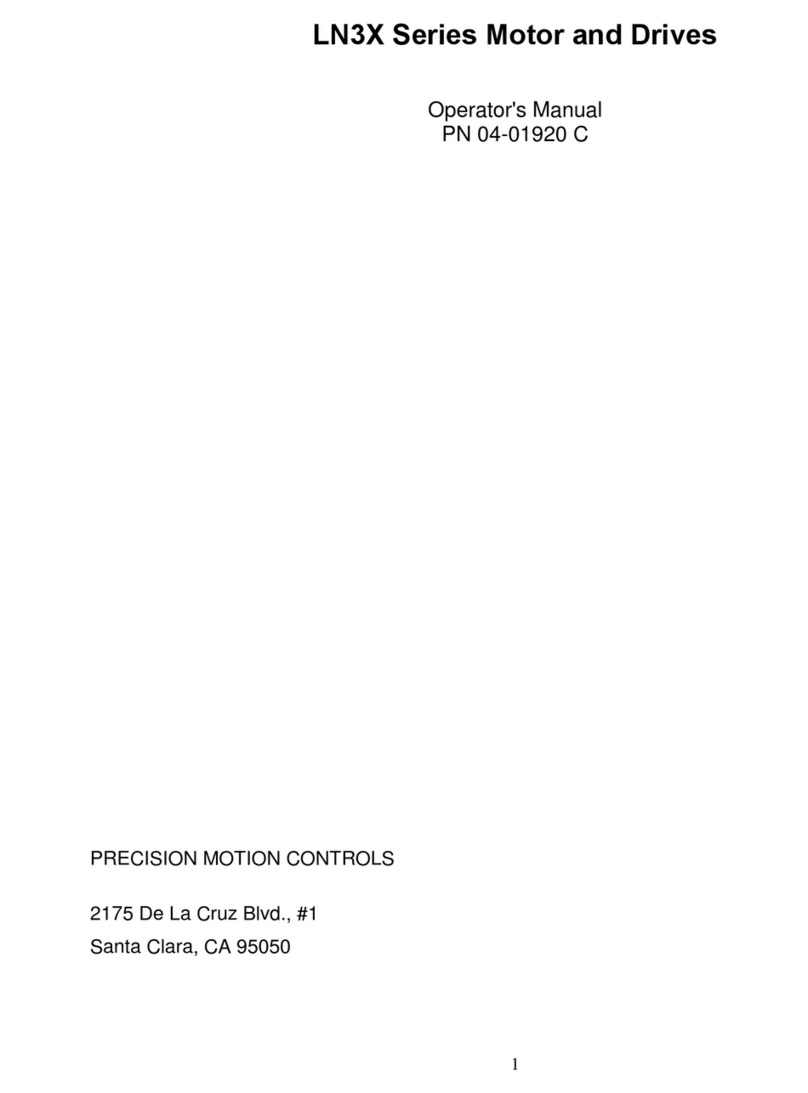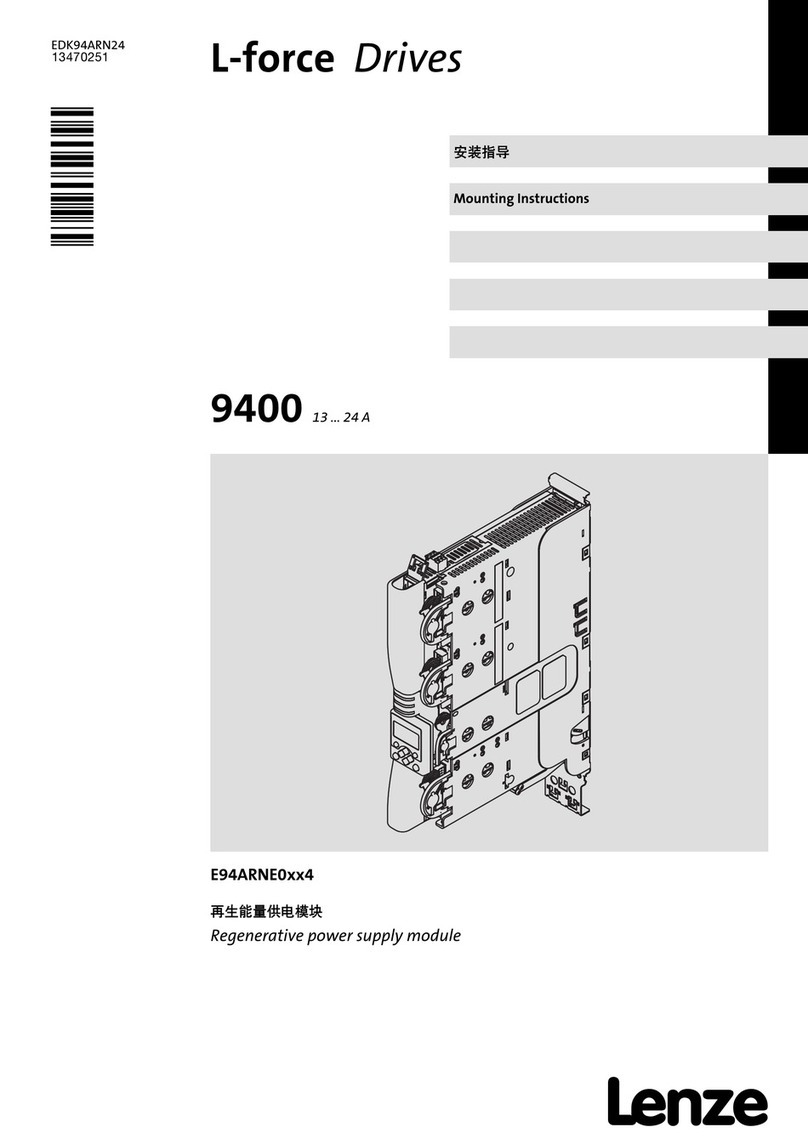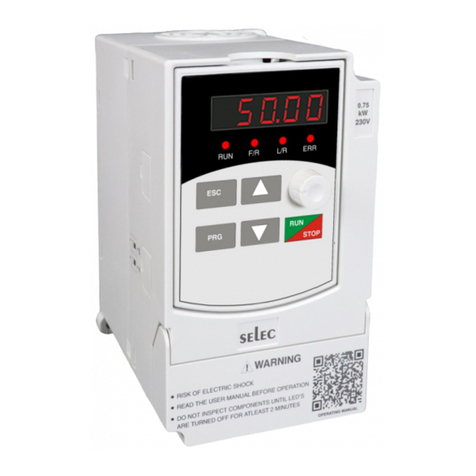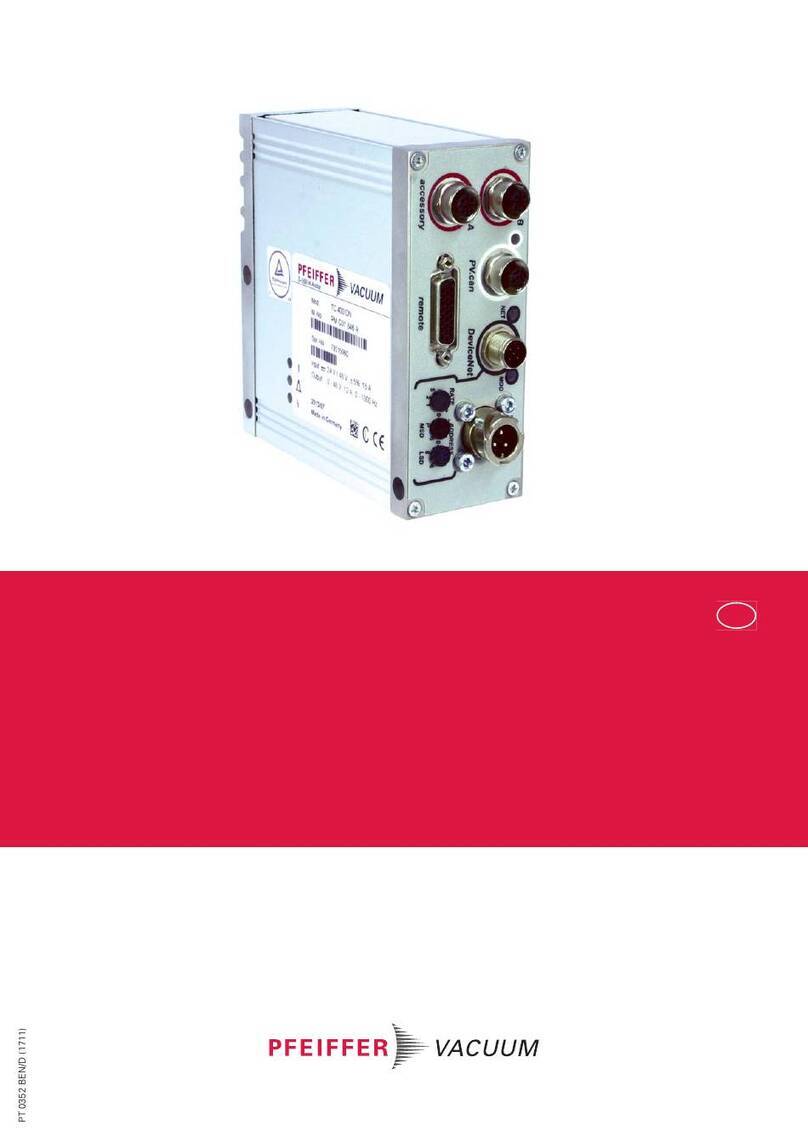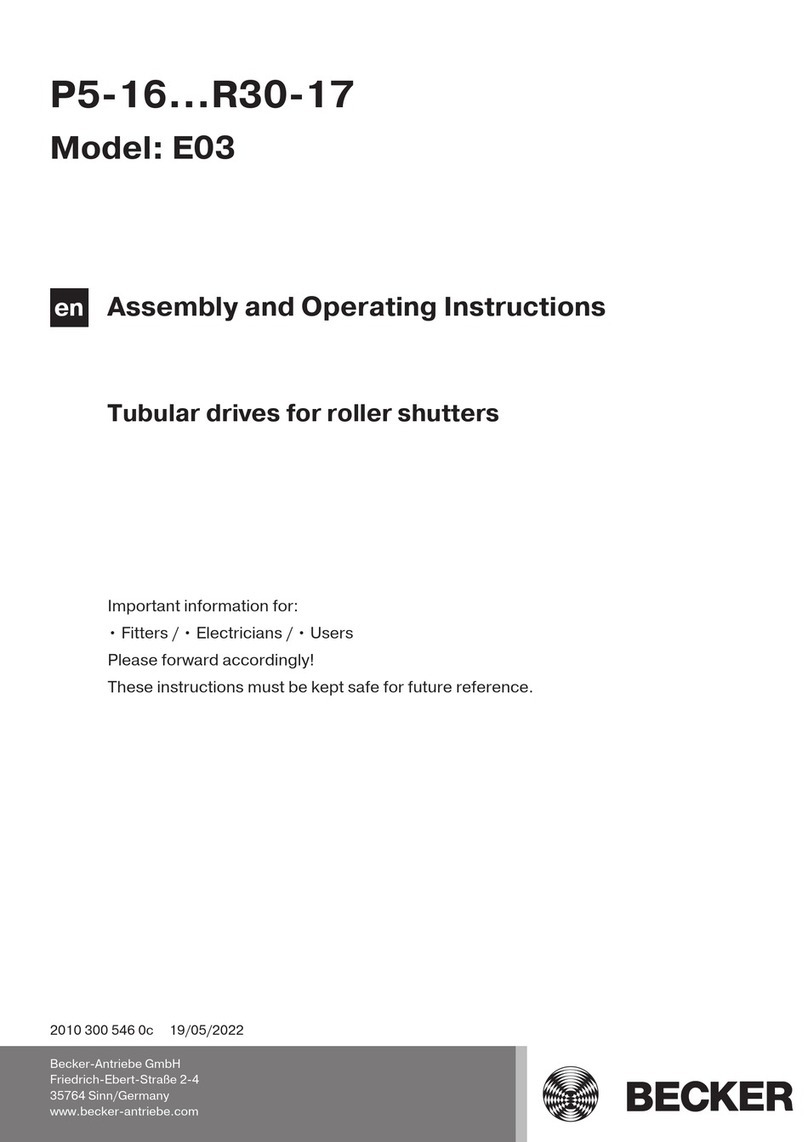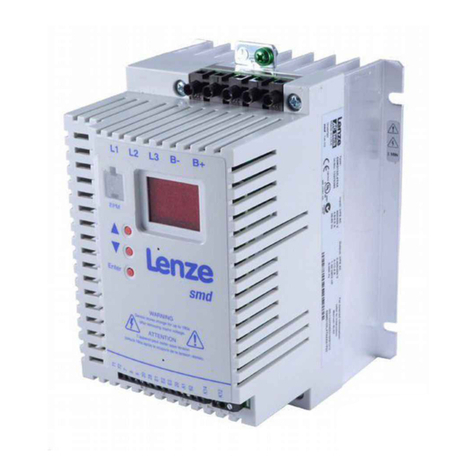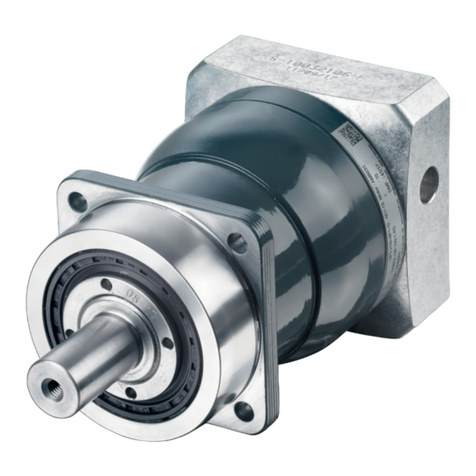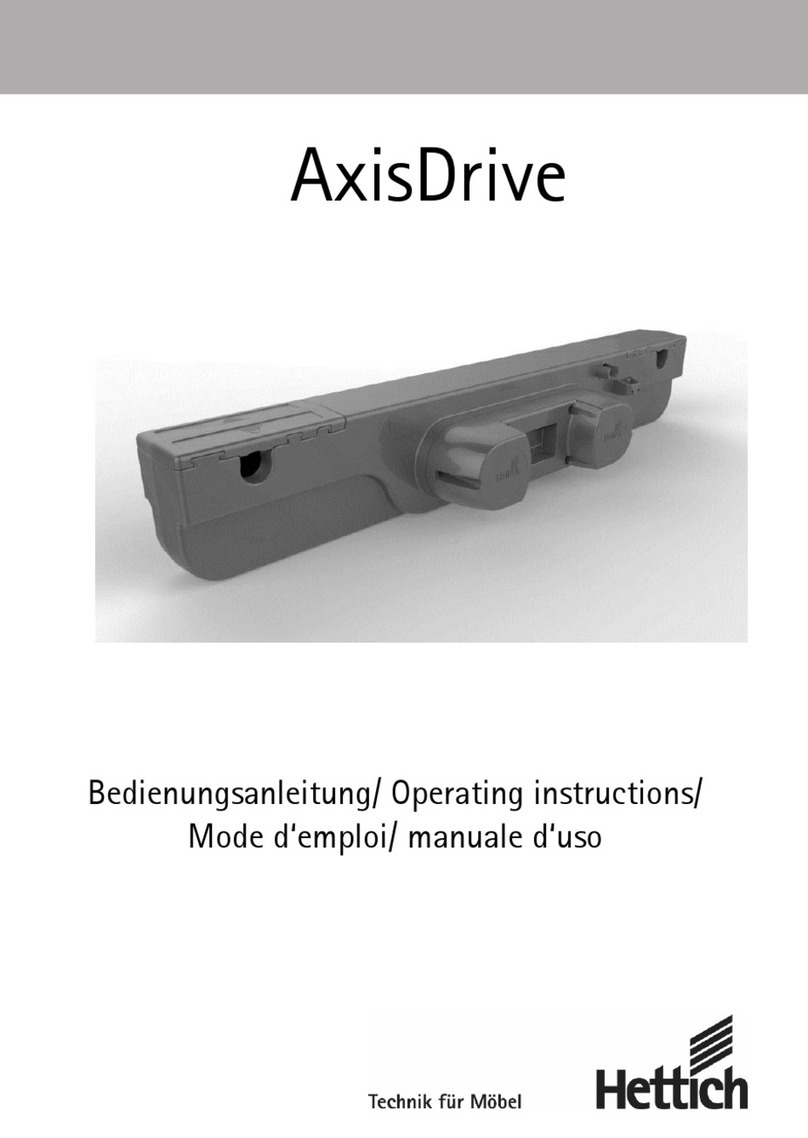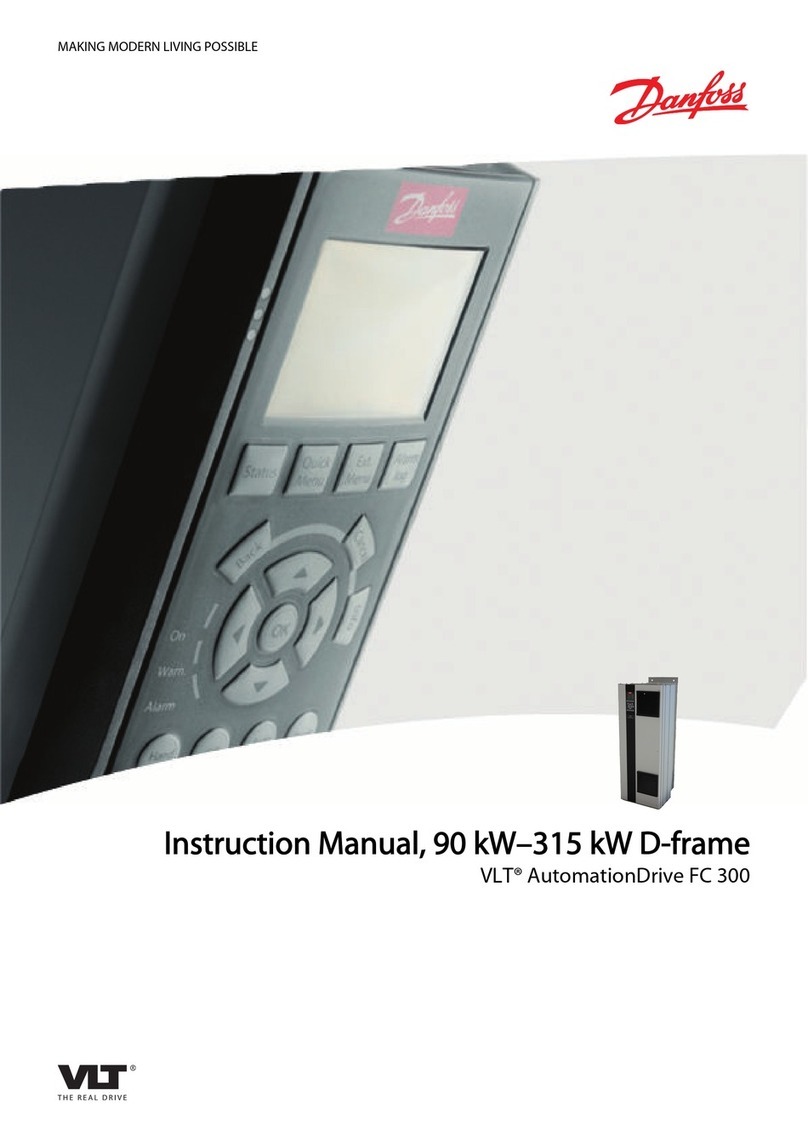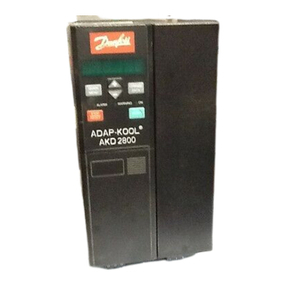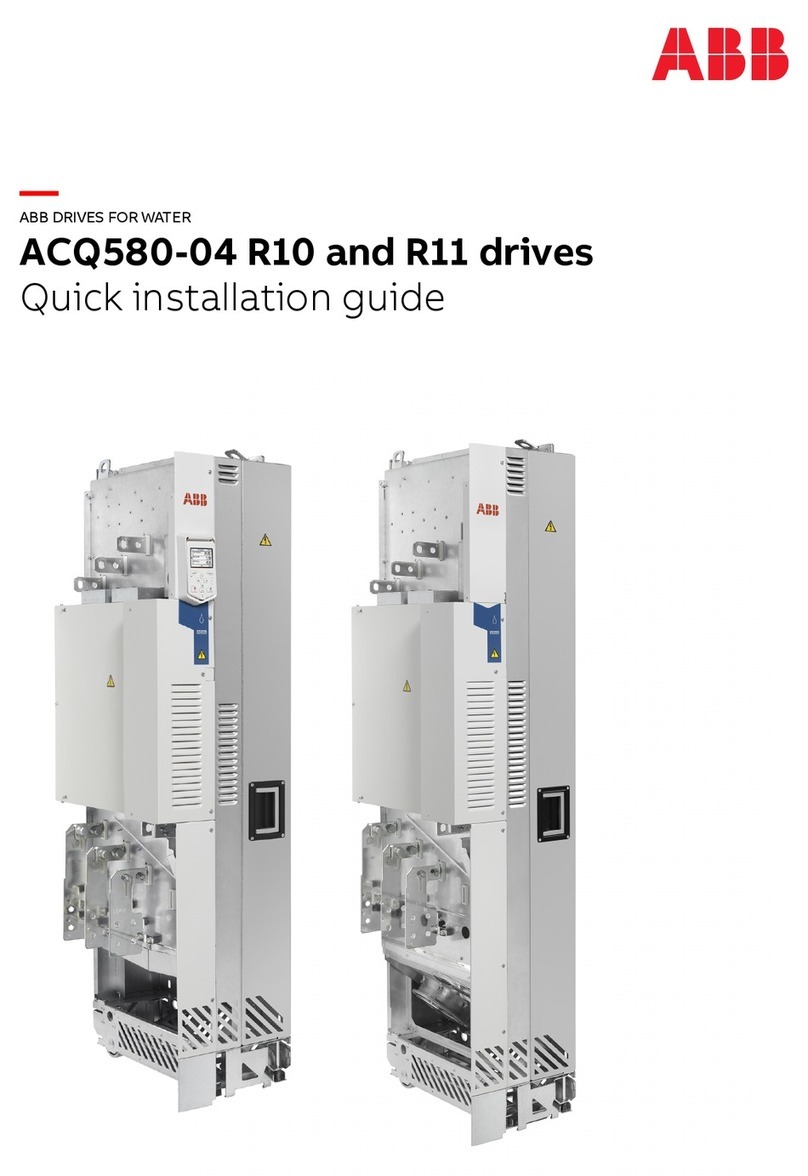CENTENT CN0162 User manual

OPERATING MANUAL
CN0162 MICROSTEP DRIVE
3879 SOUTH MAIN STREET 714-979-6491
SANTAANA, CALIFORNIA 92707-5710 U.S.A.
0 M P A N Y

This manual contains information for installing and operating the
following Centent Company products:
•CN0162 Microstep Drive
Centent and the Centent Company logo are trademarks of
Centent Company. Other trademarks, tradenames, and service
marks owned or registered by any other company and used in
this manual are the property of their respective companies.
Copyright ©2019 Centent Company
3879 South Main Street
Santa Ana, CA 97207
All Rights Reserved

CONTENTS
INTRODUCTION
GENERAL DESCRIPTION................................................................... 3
LOCATION OF COMPONENTS.......................................................... 4
INSTALLATION
POWER SUPPLY................................................................................. 5
PHASE OUTPUTS ............................................................................... 7
MOTOR LEAD COLOR CODE TABLES .......................................... 10
STANDBY SET................................................................................... 12
DIRECTION ........................................................................................ 13
STEP PULSE...................................................................................... 13
+5 VDC................................................................................................ 14
CURRENT SET .................................................................................. 15
CURRENT SET TABLE...................................................................... 16
RESOLUTION SELECT ..................................................................... 17
RESOLUTION OPTIONS TABLE ...................................................... 18
MICROSTEP COMPENSATION (Offset Trimpot adjust)................... 19
FEATURES
MICROSTEPPING.............................................................................. 20
ANTI-RESONANCE............................................................................ 21
POWER-ON RESET........................................................................... 23
UNDER-VOLTAGE LOCKOUT.......................................................... 23
FAULT LED......................................................................................... 24
CHOPPING FREQUENCY................................................................. 25
CURRENT PROFILE OPTION........................................................... 25
PERFORMANCE
MICROSTEP ACCURACY................................................................. 27
MOTOR TOLERANCES...................................................... 27
MOTOR LINEARITY............................................................ 27
MOTOR LOAD..................................................................... 28
TORQUE AND POWER..................................................................... 28
MOTOR WINDING CONFIGURATION.............................................. 30
POWER SUPPLY VOLTAGE............................................................. 33
POWER SUPPLY CURRENT............................................................ 33
MOTOR AND DRIVE HEATING ........................................................ 34
SPECIFICATIONS............................................................................................. 36

2CENTENT CN0162 MICROSTEP DRIVE
POWER SUPPLY GND.
+24 TO 80 VOLTS DC
PHASE A
PHASE B
PHASE C
PHASE D
STANDBY SET
DIRECTION
STEP PULSE
+5 VOLTS DC
CURRENT SET
GROUND
(INTERNAL)
CENTENT CN0162
HIGH RESOLUTION
MICROSTEP DRIVE
123456789101112
180
180
SEE TABLE
3.625”
92.1mm
4.0”
101.6mm
4.5”
114.3mm
3.625”
92.1mm
0.85”
21.5mm
0.125”
3.2mm
3.25”
82.6mm
0.186”
4.7mm
0.20”
5.1mm
MICROSTEPS PER STEP
SEL.A:
SEL. B:
SEL. C:
SEL. D:
CURRENT SET
AMPS/ø RESISTOR
1A
2A
3A
4A
5A
6A
7A
3.6K
7.5K
24K
33K
43K
56K
75K
110K
150K
240K
430K
1.6M
12K
18K
0.7”
17.8mm
Figure 1: CN0162 MICROSTEP DRIVE

INTRODUCTION 3
GENERAL DESCRIPTION
The CENTENT CN0162 is a high resolution step motor drive featuring four user
selectable microstep resolutions. The resolution is selected by an option header on the
front of the drive. Available step rates range from full-step to 256 microsteps. The
CN0162 driver is capable of delivering up to 1.5 million microsteps per second to the
step motor.
The CN0162 operates on an unregulated positive supply voltage of 12-80 VDC. Drive
output current ranges from .1 to 7 amps per phase. The CN0162 operates hybrid PM
step motors rated from .1 to 14 amps per phase. With suitably sized motors, over one-
third horsepower (300 watts) can be delivered to the user's application.
The control interface for the drive is opto-isolated for maximum noise immunity. The
inputs are compatible with TTL drivers and require no additional components.
Anti-resonance circuitry is employed in the CN0162 to provide mid-band stability. This
allows continuous, full power operation at speeds normally prohibited by mid-band
resonance. The pin-out of the driver is compatible with the CENTENT CN0142 and
CN0143 microstep drives.
The 'H' bridge output utilizes MOSFET design to minimize heating due to switching
losses. Automatic current standby reduces phase current to a low level while the motor
is at rest to keep heating of the drive and motor to a minimum. To improve motor
efficiency and high speed performance the CN0162 tracks the drive's chopping
frequency to the power supply voltage. This permits the use of motors with winding
inductance as low as 0.5 millihenry.
Over-current (winding shorts etc.), over-temperature (insufficient heat sinking), and
under-voltage are automatically sensed by the CN0162. When any of these conditions
occur the CN0162 shuts down and turns on a 'fault' LED to indicate the presence of the
fault condition.
The drive is compact; measuring 4" x 4.75" x .85". It comes encapsulated in a heat
conductive epoxy and encased in an anodized aluminum cover. The result is an
environmentally rugged package that resists abuse and contamination.

4CENTENT CN0162 MICROSTEP DRIVE
LOCATION OF COMPONENTS
The major components of the CN0162 are shown in Figure 2. The following is a
description of these components.
MOUNTING PLATE
Figure 2: Component Location
This plate also serves as a heatsink for the
drive. Primary heat generating
components are attached to this plate.
Secondary heat generators are thermally
coupled to it by the heat conductive
epoxy used to encapsulate the CN0162.
CONNECTOR
A 12 position terminal strip located on the
front edge of the CN0162 provides the
connections for power supply, motor
windings and controller interface. The
function of each contact is printed on the
case adjacent to the terminal strip.
OPTION HEADER
This 4 pin header is used to select microstep resolution. The user jumpers the
appropriate pins with the shorting bars supplied with the drive. Four resolutions are
available in each drive. There are a total of 21 possible resolutions for the CN0162.
FAULT LED
This LED indicates that the CN0162 has triggered its protective shutdown circuit.
Cycling the power supply after correcting the fault condition will reset the CN0162 and
turn off the LED.
OFFSET TRIMPOTS
These two adjustment pots allow the user to trim the CN0162 to a particular step motor.
This nulls out any residual step error and is especially effective at microstep resolutions
of 16 or above.

INSTALLATION 5
INSTALLATION
When operating the CN0162 at high power levels an external heatsink must be attached
to the mounting plate. Optional heatsink kits in various configurations are available
from Centent Company.
No terminals or connectors are required on the wiring to the drive. A wire size of 16-22
gauge is recommended. Either stranded or solid conductor wire may be used. The
insulation should be stripped back .25 inches and the wire left untinned. The following
section describes each connector terminal in detail.
POWER SUPPLY TERMINAL 1 & 2
Terminal 1 is the ground connection. Terminal 2 connects to the positive output from
the power supply. The power supply voltage range is +12 to +80 VDC. The power
supply may be unregulated. For unregulated supplies it is recommended that the ripple
voltage be limited to a maximum of 10% of the DC output voltage.
The power supply terminals should have a capacitor of at least 470 µfconnected
across them. This is particularly important for regulated power supplies since they
usually have little output capacitance. This capacitor should be located as close to
Terminals 1 & 2 as possible (see Figure 3, C2).
123
2
C
5A
D
5
C1
+VDC D
1-4
T1
115 VAC
F
1
Figure 3: Power Supply

6 CENTENT CN0162 MICROSTEP DRIVE
For those users that wish to build their own power supply, Figure 3 shows a suggested
circuit. Because of the electrical noise generated by these drives, it is not recommended
that the supply be shared with low level logic circuitry.
During rapid deceleration of large inertial loads from high speeds, step motors become
generators of considerable electrical power. This is returned to the supply by the step
motor drive. If the supply cannot absorb this power, the voltage generated may exceed
the 80 volt limit of the CN0162 and damage the drive and power supply.
To prevent this problem a zener diode should be connected from Terminal 2 to ground
(Figure 3, D5). This diode protects the drive from any over-voltage condition.
Recommended diodes are 1N4762 (1 watt) or 1N5375 (5 watt). Note the 5 AMP fuse
(F1) placed in series with Terminal 2 and the power supply. Be sure this fuse is located
between the power supply and the zener diode. In the event of an over-voltage condition
the zener diode and fuse may be destroyed, but the CN0162 and power supply will be
protected from damage.
Power supply current requirements depend on the motor being used and whether it is
wired for high performance (parallel) or low performance (series) operation. See
MOTOR WINDING CONFIGURATION (page 30) in the PERFORMANCE section of
this manual for a complete explanation of motor wiring options.
If the motor is wired for high performance (parallel) the current required from the
supply will not exceed 2 ⁄3 of the motor's rated per phase current. Low performance
(series) operation requires a maximum of 1 ⁄3 the motor's rated current. Use the
manufacturer's phase current rating of the motor in conjunction with the motor wiring
option to estimate the size of power supply required. As an example, a 6 wire motor
rated at 4 amps per phase is used with the power supply circuit (in Figure 3) and the
motor is in the full winding (series) configuration. To calculate the current required
from the power supply:
Amps1.33=4x
3
1
=
ISUPPLY

INSTALLATION 7
In this example, assume a transformer with a 25 volt RMS secondary will be used. After
rectification this will produce a 37 VDC power supply voltage. To calculate the size of
the filter capacitor (Figure 3, C1) use the following equation:
F3000F2995=
37 .33)(83,333)(1
=
V
)
I
(83,333)(
=
CSUPPLY
SUPPLY
1
μμ
≈
C2(in Figure 3) is the 470 µf capacitor that should be located close to the CN0162
power supply terminals. C1may be made smaller by that amount if desired. Both
capacitors must have a voltage rating safely in excess of the power supply voltage; 50
VDC being a good choice for this example.
More than one CN0162 can be run from a common power supply if the filter capacitor
is sized large enough to account for the combined load. Each CN0162 must have
separate power supply leads back to the power supply.
PHASE OUTPUTS TERMINALS 3 - 6
These are the phase winding outputs to the step motor. One motor winding goes to
PHASE A-B and the other motor winding connects to PHASE C-D. No power is
applied to the Phase outputs until reception of the initial step pulse after power-up of the
CN0162 (see page 23 - Power-On Reset).
The CN0162 will drive 4, 6 and 8 wire motors. With 6 wire and 8 wire motors, the user
has the option of connecting the windings in a high or low performance configuration.
References in this manual to full or half-winding configurations (6 wire motors) infers
series or parallel configurations (8 wire motors) as well. A 4 wire motor is considered to
be wired in the high performance configuration. See MOTOR WINDING
CONFIGURATION (page 30) in the PERFORMANCE section of this manual to
determine the best configuration for your application.

8 CENTENT CN0162 MICROSTEP DRIVE
PHASE A
PHASE B
n.c.
PHASE C
PHASE D
n.c.
The high performance configuration in
a 6 wire motor is called half winding
or parallel operation. Half winding
operation uses the center-tap wire and
one end wire to constitute a winding
(Figure 4). The other end wire of each
winding is not used. In a 8 wire motor
the windings are connected as pairs of
parallel wired windings.
Figure 4: Half Winding
PHASE A
PHASE B
PHASE C
PHASE D
n.c.
n.c.
The low performance configuration in a
6 wire motor is called full winding or
series operation. Only the end wires of
each phase constitutes a winding
(Figure 5). The center-taps are left
unused. In a 8 wire motor the windings
are connected as pairs of series wired
windings.
Figure 5: Full Winding
Table I & Table II (Page 10) show various manufacturer's 6 wire motor lead color codes
and how they connect to the CN0162 for full winding and half winding operation. Table
III & Table IV (Page 11) show various manufacturer's 8 wire motor lead color codes
and how they connect to the CN0162 for series and parallel wired operation. Note that
the wires in parentheses are connected to each other and not to a terminal on the
CN0162. Wires not connected to the CN0162 should not be left exposed. Cut off the
stripped ends and insulate them with electrical tape or heat-shrink tubing.

INSTALLATION 9
The CN0162 is a high frequency switching type drive. Because of the rapid rate of
voltage and current change inherent with this type of drive, considerable RFI is
generated. The following precautions should be taken to prevent noise from coupling
back to the inputs and causing erratic operation.
1. Never run the motor leads in the same cable or wiring
harness as the STEP, DIRECTION or +5 VDC input lines.
2. Keep power supply leads as short as possible. If the power
supply lead length exceeds 12 inches, use a .1 µf capacitor
across Terminals 1 & 2 at the drive.
3. Never wire capacitors, inductors or any other components
to the motor output terminals.
4. Ground the CN0162 case.
5. Ground the step motor case.

10
Table I: FULL WINDING OPERATION
MOTOR TERMINAL
MANUFACTURER 3 4 5 6
SUPERIOR ELECTRIC GRN/WHT GREEN RED/WHT RED
RAPIDSYN GRN/WHT GREEN RED/WHT RED
IMC GRN/WHT GREEN RED/WHT RED
EASTERN AIR DEV. GRN/WHT GREEN RED/WHT RED
PACIFIC SCIENTIFIC BLACK ORANGE RED YELLOW
WARNER ELECTRIC BROWN ORANGE RED YELLOW
VEXTA BLUE RED BLACK GREEN
JAPAN SERVO BLUE RED YELLOW GREEN
Table II: HALF WINDING OPERATION
MOTOR TERMINAL
MANUFACTURER 3 4 5 6
SUPERIOR ELECTRIC WHITE GREEN BLACK RED
RAPIDSYN WHITE GREEN BLACK RED
IMC WHITE GREEN BLACK RED
EASTERN AIR DEV. WHITE GREEN BLACK RED
PACIFIC SCIENTIFIC BLACK ORG/BLK RED RED/YEL
WARNER ELECTRIC BLACK ORANGE RED WHITE
VEXTA BLUE WHITE YELLOW GREEN
JAPAN SERVO BLUE WHITE * WHITE * GREEN
* White wires are not interchangeable, use ohm meter
to find white-blue and white-green pairs.

11
Table III:SERIES WINDING OPERATION
MOTOR TERMINAL
MANUFACTURER 3 4 5 6
SUPERIOR ELECTRIC RED RED/WHT GREEN GRN/WHT
(BLACK-WHITE) (ORANGE-BLK/WHT)
PACIFIC SCIENTIFIC BLACK ORANGE RED YELLOW
(BLK/WHT-ORG/WHT) (RED/WHT-YEL/WHT)
BODINE BROWN ORANGE RED YELLOW
(BRN/WHT-ORG/WHT) (RED/WHT-YEL/WHT)
PORTESCAP BROWN ORG/WHT RED YEL/WHT
(BRN/WHT-ORANGE) (RED/WHT-YELLOW)
DIGITAL MOTOR BLACK ORANGE RED YELLOW
(BLK/WHT-ORG/WHT) (RED/WHT-YEL/WHT)
Table IV: PARALLEL WINDING OPERATION
MOTOR TERMINAL
MANUFACTURER 3 4 5 6
SUPERIOR ELECTRIC RED BLACK GREEN ORANGE
WHITE RED/WHT BLK/WHT GRN/WHT
PACIFIC SCIENTIFIC BLACK BLK/WHT RED RED/WHT
ORG/WHT ORANGE YEL/WHT YELLOW
BODINE BROWN BRN/WHT RED/WHT RED
ORG/WHT ORANGE YELLOW YEL/WHT
PORTESCAP BROWN BRN/WHT RED RED/WHT
ORANGE ORG/WHT YELLOW YEL/WHT
DIGITAL MOTOR BLACK BLK/WHT RED RED/WHT
ORG/WHT ORANGE YEL/WHT YELLOW

12 CENTENT CN0162 MICROSTEP DRIVE
STANDBY SET TERMINAL 7
This output implements the automatic standby feature of the CN0162. By reducing the
phase current to a lower, 'standby' level the drive system operates cooler during periods
of motor inactivity. Heating of the motor, drive, and power supply are kept to a
minimum by utilizing this option.
The amount of current reduction is adjustable from 0% to 100% of normal operating
current. A resistor is connected from the STANDBY SET output to the CURRENT
SET input (Terminal 7 to Terminal 11) to set the current reduction.
The value of the STANDBY SET resistor is calculated from the following two
equations:
I
-7.2 )
I
((47,000)
=
RSTANDBY
STANDBY
PARALLEL
Where RPARALLEL is the resistance required at Terminal 11 to set the desired
standby current, ISTANDBY. This is the parallel combination of the existing
CURRENT SET resistor, RSET; and the yet to be calculated STANDBY SET
resistor, RSTANDBY.
R
-
R
)
R
()
R
(
=
RPARALLELSET
SETPARALLEL
STANDBY
Where RSTANDBY is the resistor that will go between Terminal 7 and Terminal
11. Negligible power is involved; so a 1
⁄
4 watt resistor is fine.
When the motor has stopped for more than .1 seconds, the STANDBY SET output
grounds RSTANDBY, effectively placing it in parallel with RSET. This lowers the total
resistance at the CURRENT SET input. Motor phase current is restored to its normal
level 2 milliseconds after the next STEP pulse is received. Standby current reduction is
not recommended when operating at less than 10 pulses/sec. (to prevent a reduction in
operating current between input pulses).

INSTALLATION 13
If no current reduction is desired during standby, the STANDBY SET output is not
connected. If 0% of normal current (freewheeling) is desired during standby, short
Terminal 7 to Terminal 11.
DIRECTION TERMINAL 8
Terminal 8 is the DIRECTION input. This input is sampled by the CN0162 on every
step pulse input to determine which direction the motor will move.
The setup time for this input is 10 microseconds. This means the DIRECTION input
must be correct 10 microseconds before the step pulse is issued. If the DIRECTION
input is changed simultaneously with the low to high transition of the step pulse the
direction will not change until the next step pulse.
The CN0162 employs an optocoupler to isolate the DIRECTION input from the driver's
power supply. The user must provide a +5 VDC supply to operate the optocoupler
circuit. This permits the use of current sink drivers, such as TTL logic or open collector
transistors, to operate the input. The current requirement is 16 milliamps, which is
compatible with standard TTL outputs.
STEP PULSE TERMINAL 9
Microstepping in the CN0162 occurs on both edges of the step pulse input. This is done
to improve motor smoothness at low speeds.
The current is changed in the PHASE A-B motor winding on the leading edge of the
step pulse. The current is changed in the PHASE C-D motor winding on the trailing
edge of the step pulse. The result is a smoothness equivalent to a drive operating at
twice the selected microstep resolution.
This improvement comes for 'free', since the pulse rate is half of what would normally
be required to achieve a given level of smoothness. The effect is most pronounced when
the input is driven by 50% duty cycle pulses. The improvement is negligible when
driven by very narrow (low duty cycle) pulses.

14 CENTENT CN0162 MICROSTEP DRIVE
The CN0162 employs an optocoupler to isolate the STEP PULSE input from the
driver's power supply. The user must provide a +5 VDC supply to operate the
optocoupler circuitry. This permits the use of current sink drivers, such as TTL logic or
open collector transistors, to operate the input. The current requirement is 16 milliamps,
which is compatible with standard TTL outputs. The maximum STEP PULSE rate is
1.5 Mhz. The minimum on or off time is 300 nanoseconds. There are no rise or fall time
limits.
+5 VDC TERMINAL 10
This is the common anode terminal for the STEP PULSE and DIRECTION optocoupler
LEDs. An external +5 VDC supply is connected to this terminal to provide the source of
LED current for the Step Pulse and Direction inputs. If both are on, 32 mA of current is
required from the +5 VDC supply. The LEDs have antiparallel connected diodes across
them for protection against inadvertent polarity reversal.
If power supply voltages higher than 5 VDC must be used, the STEP PULSE and
DIRECTION inputs require additional series resistance to limit currents to a 16
milliamps level. The following equation determines the value for these resistors:
-180
.016
1.5)-(V
=R ⎟
⎠
⎞
⎜
⎝
⎛
For example, if a +12 volt supply is to be used:
Ω≈
⎟
⎠
⎞
⎜
⎝
⎛470476.25=180-656.25=-180
.016
1.5)-(12
=R
(place a 470 ohm resistors in series with each input)
DO NOT PUT RESISTORS IN SERIES WITH THE +5 VDC TERMINAL.

INSTALLATION 15
CURRENT SET TERMINAL 11 & 12
The CURRENT SET input determines the magnitude of the motor phase currents. This
is done by connecting a 1 ⁄4 watt resistor between Terminals 11 & 12. Terminal 11 is
the CURRENT SET input and Terminal 12 is the ground reference.
Do not use Terminal 12 for power supply ground; Terminal 1 is power supply
ground.
The resistor value for phase current for a motor in the high performance configuration is
derived using the following equation:
I
-7.2 )
I
(47,000)(
=
RSET
SET
SET
Where RSET is the current set resistor and ISET is the desired current.
Table 5 (page 16) lists resistor values rounded off to the nearest 5% standard resistors
for both high performance (half winding) and low performance (full winding) operation.
Use the half winding values for operating 4 wire motors.
The maximum phase current of 7.2 amps is obtained with no CURRENT SET resistor
(Terminal 11 voltage equals 2.5 volts), Zero phase current occurs with CURRENT SET
shorted to ground (Terminal 11 voltage equals 0 VDC).
For best low speed smoothness, the motor phase current should not differ from the
manufacturer's rating by more than ± 20%. Currents substantially above or below this
may affect microstep accuracy and increase low speed vibration.
THE CN0162 DEFAULTS TO ITS MAXIMUM CURRENT OF 7.2 AMPS
PER PHASE IF NO CURRENT SET RESISTOR IS PRESENT. THIS
MAY CAUSE DAMAGE TO A MOTOR THAT IS TOO SMALL FOR THIS
CURRENT LEVEL.

16 CENTENT CN0162 MICROSTEP DRIVE
CURRENT SET TABLE
MODE OF OPERATION RESISTOR
HALF WINDING
(PARALLEL) FULL WINDING
(SERIES) STANDARD ±5%
(OHMS)
0.1 A
0.2 A
0.3 A
0.4 A
0.5 A
0.6 A
0.7 A
0.8 A
0.9 A
1.0 A
0.2 A
0.4 A
0.6 A
0.8 A
1.0 A
1.2 A
1.4 A
1.6 A
1.8 A
2.0 A
680
1.3 K
2.0 K
2.7 K
3.6 K
4.3 K
5.1 K
5.6 K
6.8 K
7.5 K
1.25 A
1.50 A
1.75 A
2.00 A
2.5 A
3.0 A
3.5 A
4.0 A
10 K
12 K
15 K
18 K
2.25 A
2.50 A
2.75 A
3.00 A
4.5 A
5.0 A
5.5 A
6.0 A
22 K
24 K
30 K
33 K
3.25 A
3.50 A
3.75 A
4.00 A
6.5 A
7.0 A
7.5 A
8.0 A
39 K
43 K
51 K
56 K
4.25 A
4.50 A
4.75 A
5.00 A
8.5 A
9.0 A
9.5 A
10.0 A
68 K
75 K
91 K
110 K
5.25 A
5.50 A
5.75 A
6.00 A
10.5 A
11.0 A
11.5 A
12.0 A
130 K
150 K
180 K
240 K
6.25 A 12.5 A 300 K
430 K6.50 A 13.0 A
6.75 A 13.5 A 680 K
1.6 M
7.00 A 14.0 A
Table V: CURRENT SET TABLE

INSTALLATION 17
The CURRENT SET input may also be driven by external circuitry such as
operational amplifiers. In this case motor phase current is a linear function of the
voltage on Terminal 11. Exceeding 2.5 VDC on Terminal 11 may result in permanent
damage to the drive.
The CURRENT SET input is used in conjunction with the STANDBY SET input to
provide current reduction while the drive is idle. See STANDBY SET, page 12 for
details.
Phase current reduction can also be achieved by switching in an external parallel
resistance. The circuit in Figure 6 shows how optically isolated standby torque and
freewheeling functions may be implemented.
+5 VDC
11
12
STANDBY RESISTOR
220
220
'0'= RUN
'1'= STANDBY
'0'= ON
'1'= RESET
CURRENT
SET
RESISTOR
H11F1 H11F1
STANDBY
FREEWHEEL
TTL
TTL
Figure 6: External current standby
RESOLUTION SELECT OPTION HEADER
The OPTION HEADER is used to select the microstep resolution from the four
available in each drive. It is located on the face of the drive, beneath the FAULT LED.
Jumpers are installed as shown in Figure 7.
MICROSTEPS PER STEP
SEL. A:
SEL. B:
SEL. C:
SEL. D:
(A) (B) (C) (D)
Figure 7: Option Header
The resolution for each selection is printed on the
case of the CN0162. To select a microstep
resolution, install jumpers in the following
manner:
SEL. A: both jumpers installed
SEL. B: left jumper only
SEL. C: right jumper only
SEL. D: no jumpers required

18 CENTENT CN0162 MICROSTEP DRIVE
256
Twenty-one different microstep resolutions
are available in the CN0162. The drive is
supplied to the user with 4 of the 21
available. Not all combinations of step
resolutions are possible. Table VI may be
used to determine the available
combinations. The CN0162 is delivered as
Option A, B, C or D. All four step
resolutions for a given CN0162 must be
selected from the same column (A, B, C or
D) of Table VI.
250
200
160
128
125
100
80
64
50
40
32
25
20
16
10
8
5
4
half
full ABCD
OPTION
STEP RESOLUTION
It is permissible to switch the OPTION
HEADER dynamically. The shorting bars
may be replaced with TTL compatible
drivers to allow the user to change the
microstep resolution while the motor is
running. Switching must occur at the full
step location to maintain accurate step
position.
An example of this would use a high
resolution at low speed, and switch to a
medium or low resolution during
acceleration and high speed. This would
keep the step rates at relatively low
frequencies during the entire operation cycle
while maintaining maximum smoothness at
low speeds.
Table VI: Resolution Options
As well as choosing the step resolutions available in the driver, the user may specify the
phase current profile for each selection. This is done to compensate for non-linearity in
microstep step size at high resolutions. For more information, see CURRENT PROFILE
OPTION (page 25).
Table of contents
Other CENTENT DC Drive manuals
